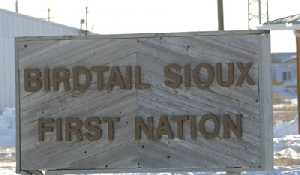Sask targets rural crime
August 29, 2017, 2:17 am
Kevin Weedmark


Protection and Response Team
Saskatchewan’s provincial government unveiled a new initiative to tackle rural crime last week, including adding additional RCMP officers and providing firearms training and firearms to highway traffic officers, including those stationed in Moosomin.
Saskatchewan Justice Minister and Attorney General Gordon Wyant announced Tuesday the creation of the new Protection and Response Team (PRT) to aid in the reduction of crime in rural Saskatchewan.
The new PRT is being created in response to recommendations by the Caucus Committee on Crime. The new PRT will consist of 258 armed officers who will have arrest and detention powers, and will be comprised of:
• 120 police officers from RCMP and municipal police services;
• 60 police positions currently deployed to the Combined Traffic Services Saskatchewan (CTSS) Initiative;
• 30 new police positions;
• 30 re-purposed police positions currently funded by the ministry;
• 40 Ministry of Highways Commercial Vehicle Enforcement Officers (CVEO) with expanded powers; and
• 98 Ministry of Environment Conservation Officers (CO).
All PRT members will receive a comprehensive training curriculum which will be provided to all officers regardless of their designations. PRT expands on the successes of blended policing models to:
• Improve police response to emergency calls for services, including property crimes that are in progress.
• Enhance uniform visibility and presence in rural Saskatchewan.
• Increase the enforcement of drug trafficking on Saskatchewan’s roadways.
“The security and safety of the people of Saskatchewan is the number one priority of the Ministry of Justice,” Wyant said.
A total of $5.9 million will be invested in order to support the new group and other recommendations in the report.
SGI will provide $4.9 million directly to fund the additional officers and an additional $1 million will come from the Ministry of Justice.
The Committee’s recommendations also include ensuring RCMP resources and personnel are used effectively in rural areas; reviewing legislation to allow municipalities to jointly administer alternative policing programs; providing more funding for on-reserve programming and services; and other measures.
The recommendations are the result of consultations the Committee conducted beginning in November 2016. As part of these consultations, the Committee toured 10 communities over 12 days and met with 58 stakeholders.
“The Committee heard several issues on crime in rural and urban areas, and the absence of police visibility in rural areas was a main concern,” Committee Chair Herb Cox said.
In an interview with the World-Spectator on Thursday, deputy minister of Justice Dale McFee said that overall crime in rural Saskatchewan has been declining, but in specific areas it has been on the increase.
“Overall rates have gone down. What we are seeing, though, is there are pockets where they have picked up,” he says. “A large part of our strategy when we were building this plan was to look at that and how we can successfully increase visibility in those areas. Obviously those areas don’t always remain the same—they can change. That is the whole idea, to become intelligence-led and use the data and to put a team together that consistently deploys services and be in those areas where these trends are.”
He said the team is still determining where additional resources need to be located. “Logistically, it will be worked out with the group. There is actually a meeting today. When you put a provincial team together, you have got a bunch of resources that are currently in many areas in our province and it is more realistic to look to a design that can make an impact on our whole province. Visibility is only one of the things that can reduce crime—there is lots of evidence in relation to that—but it also brings your resources in closer proximity should there be something in progress. It benefits in more than one way.”
McFee said the Combined Traffic Services Saskatchewan (CTSS) Initiative has been successful in reducing highway collisions, and serves as a model for the new plan.
“CTSS is exactly why we have expanded this to the provincial program. What we’ve done is added additional capabilities to that and looked at the success rate. For instance where we had them in southeastern Saskatchewan the deaths on the highways went from approximately 17.2 to almost 12 percent—that is a huge reduction. That is a huge reduction in saving lives, serious motor vehicle accidents, as well as significant savings both in human and financial terms.”
One of the changes will be training highway traffic officers, including those stationed at Moosomin, to carry firearms.
“What the intention is, is to look at training them in firearms,” he says. “We have a police college and there are lots of ways to do that, so there will be some further training. If you look at it from an individual perspective, when you are driving down the road, all of these people—whether it is the police or the municipal RCMP, SERM or highway traffic—they all have provincial jurisdiction. And when you have red and blue lights on our roads, whether it is in rural Saskatchewan or the city, there is an expectation that is someone that you can go to for help. They will be trained with firearms. They are not going to be asked to change their duties. It will just be some expanded capabilities.”
How quickly will highway traffic officers be trained and issued weapons?
“That discussion with all the stakeholders is taking place today,” said McFee. “I want to be very clear that we will take the time required to do it properly. There are lots of requirements when we are talking about firearms. You can rest assured if folks are going to carry firearms folks will be properly and appropriately trained.”
He said conservation officers already have training similar to police officers.
“They are trained very similar to the police if you think about it. They carry firearms now. They are responding to serious incidents such as gun calls and people with firearms. So if we added some things to that, they can stop some vehicles on highways and it just makes a whole lot of sense. And what makes the most sense is to put them in a team concept where their responsibility is about the citizens and the property.”
Where will the new positions be located?
“It will be a combination of municipal police and RCMP services. We want a presence across the whole province and certainly we clearly understand that we have to increase and enhance our response in rural Saskatchewan.”
While some rural RCMP detachments are currently operating with less than a full complement of officers, McFee says he doesn’t anticipate any difficulties in filling the new positions.
“These are new positions. The only challenges that we have is obviously in the police positions. Some of them will have to go through a police college. Whether it’s the Saskatchewan Police College, which is municipal, or the RCMP Depot, that takes a bit of time.”
How many unfilled positions are there currently in rural detachments?
“I don’t know,” says McFee. “I know that is a question the RCMP get frequently asked. One of the parts of the plan is they are going redeploy 10 people from administrative duties into relief teams to help staff some of those vacancies.”
McFee said the changes to staffing are permanent.
“There is no reason that this shouldn’t be ongoing, but at the same time if there needs to be further evaluation and tweaking, we’re not closing our minds to that too. This is all about measurements, outcome and about increased visibility. We need to have better response in rural Saskatchewan and those emergent situations when people are in trouble. There is no reason that if we have a vehicle (SERM or Highway Traffic Board) closer, that one of those vehicles can’t go to that call. When we are stopping vehicles let’s train them so we can do a better job in stopping things like meth, fetanyl and all those drugs coming into our province that are disrupting and harming a lot of lives of our citizens.”
How will the government measure the success of the initiative?
“We have already evaluated the CTSS, and SGI did a thorough investigation of that,” McFee said. “Certainly you have measurement with the number accidents that have gone down.”
Curtis Zablock, the commanding officer of the RCMP in Saskatchewan, was happy with the announcement last week.
“We are very pleased with the response being taken to address the recommendations of the committee,” he said.
“Our priorities have always been the safety and security of the public and of our officers. The recommendations in this report bolsters our efforts to deliver on those priorities.
“As the Provincial Police Service in Saskatchewan, we must ensure we’re deploying our resources as effectively as possible. As part of the ongoing review of our resources, earlier this year we redeployed 10 regular member positions from specialized and support units to front line policing. This focus on front line policing will assist in addressing some of the inherent challenges of rural policing.
“The announcement of the new Protection and Response Team will enhance our ability to address crime in rural Saskatchewan. Existing combined units have already proven they can be successful. Working in collaboration with our policing and enforcement partners makes us a more effective, efficient police service. The addition of 30 new police positions will result in enhanced police presence and visibility in rural Saskatchewan, increased enforcement around illicit drugs and safe roads and assistance to boost police response to emergency calls for service.”



































